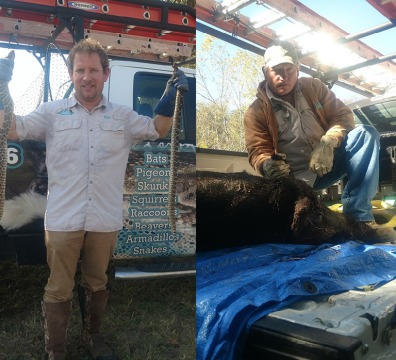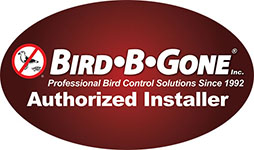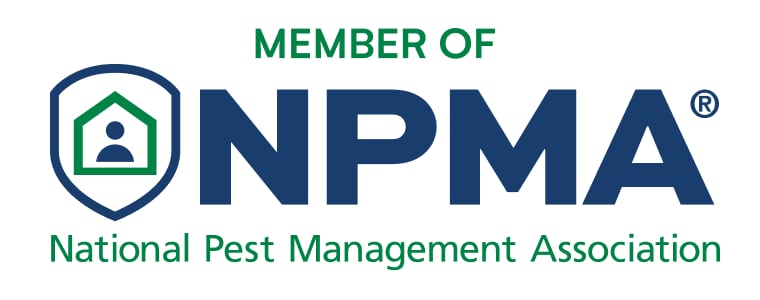
What is Wildlife Exclusion?
Exclusion means sealing off entry points for animals to your home or business in a way that stops them from getting in. This is easier than trying to exclude wildlife by yourself. You can seal all entry points so that they cannot come in.
AAAC Wildlife Exclusion Services is able to provide humane exclusion services for all wildlife that might pose a risk to your home and business. We have the expertise to exterminate safely and effectively.
We can help if there are animals living underneath your house or inside your walls. We will seal any animal entry points we find. These include holes in floors, cracks around pipes, and anything else that could allow an animal to enter your home or business.
How We Conduct Wildlife Control and Exclusion Services
If you’re considering trapping and possibly getting rid of nuisance wildlife that has somehow managed to get into your home and business. Know that the problem is not solved by trapping alone. The first infestation might be exterminated, but without wildlife exclusion, you’re just waiting for the next one to emerge. Here are the steps we take to stop the infestation cycle using animal exclusion techniques:
Find and seal all entry points:
We start by looking for any access points that animals may use. This could be holes in floors or cement cracks that surround pipes or any other way an animal might get into your home. This can also include holes in roof shingles, roof flashing, and eaves. These access points are then blocked off. We can also use rubber grommets, or metal grommets, to seal the hole. In other cases, we can use wire mesh to plug cover the holes. Our third step is to add a weatherproof cover over your blocked-off hole so it can protect any openings from rain, snow, and wind. Finally, we need to wait to see if any other openings could allow animals into your building before sealing them.
Exclude wildlife using a trap or one-way door
Top pest experts will find the main entrance wild animals use for entry to your home and business. To properly exterminate nuisance wildlife, we purposely do not seal the hole. Once we have identified it we can use either a one-way door or a live trap.

One-way doors: A one-way door is a good option for those people who don’t want to kill the animal. These doors are designed to allow animals to enter, but not leave. You will need to leave a small opening on the door, just enough so that the animal can fit through it, but is not able to turn around and get out. Next, we place the bait on the opposite side of the hole and close it. The animal will then go in. They can’t turn around or leave the hole from this side once they’ve headed towards the bait.

Live traps: We place traps close to any openings on the roof or outside that animals might use to enter your home. To lure them into our trap, we place the traps near the openings. Once they’re caught, we won’t have to deal or see them. Once the animal enters the trap, it’s caught!. If we are trapping larger wildlife such as possums or raccoons, we may need to use a cage trap. This trapping device is made of wire mesh and will keep the animal contained. After that, technicians from our wildlife company will remove the animal from your home.
Popular Access Points for Animal Entry
For future wildlife infestations to be prevented, an experienced wildlife pest control company operator must inspect all the possible ways squirrels, rodents (rats, mice, bats, birds, and other wildlife) can use to access your home. AAAC Wildlife Removal does a thorough job, but here’s a quick overview of the most common access points animals use to enter your home.

Ridge Vents
Bats commonly enter attics through the Roof Ridge Vent. This is a narrow metal strip that runs along one side of the roof. To stop this from happening, we can seal off any openings in the side of the vent using a Ridge Guard. We can seal the vents and do a complete roof replacement to make your house animal-proof. We can help you determine if the vents on your roof are allowing critters inside.

Gable Vents
Raccoons, squirrels, or other animals often enter homes through gable ventilation. These vents are designed to provide airflow to your attic in hot weather and they may be screened over or have a small flap that can easily be pried open from underneath with the animal’s paw. We can secure these vents with a wire mesh. This allows for airflow but does not allow animals to enter. We can also replace any rotted wood or damage that may have allowed the critters to enter.

Dryer Vents
Dryer vents can be a common entryway for rodents or birds. If rodents find themselves migrating from one place to another looking for shelter and food, they will most likely use dryer vents as a way to enter your home. The airflow through dryer vents keeps the birds alive so we need to seal off any vent openings and secure the areas with metal mesh.
Birds love dryer vents because of the warm airflow that is moving through them. You may notice your electricity bill going up and down as birds use your dryer vents for access to convenient nesting space. Installation of common vent guards is the best protection.

Soffit
Squirrels and raccoons love to enter your attic through damaged soffits. A professional wildlife removal service operator will replace any wood that has rotted and seal the openings using metal mesh or closures. Your soffit will look as good as new and your rodent family will be gone for good.

Fascia
Another favorite spot for wild animals is the fascia on the house. If your roof has gutters, the fascia is what would be below the gutter. It is a board that covers the gap between your roof edge and your gutters. To stop wildlife from using the access point, we seal all gaps with metal mesh, replace any rotten wood, then cover it with a metal covering that allows water to flow freely but prevents animals from entering.

Eaves
Raccoons love to get into your home through the eaves. Eaves are the edges of your roof where it meets the side of the house. Our technicians can either use metal mesh to secure the area or install special eaves guards to keep wildlife out.
The Chimney
A chimney is one of the most common entry points for animals into a home. We use chimney caps that will prevent this entryway, or we will remove and replace chimney liners if we need to get rid of critters that are already inside.
Bats, squirrels, and raccoons love to find a warm place to sleep inside the chimney. It is difficult for animal control agencies to inspect this access point due to the risk of fire and venting. To find out the animal’s hiding place, we often use flameless heat detection cameras. We also have the option to just remove the old liner or cap and replace it.

Cracks in the foundation
Foundation cracks are a favorite entry point for rodents. We can fill foundation cracks with cement filler compounds to keep rodents out of your home. This repair is animal-proof and will make your home look great from the outside.

Exposed pipes
All species of rodents just love to get inside the walls of your home using exposed pipes. You can protect your home from rodents by securing any gaps with metal mesh and covering up any pipe openings with a cap. This will stop animals from entering your home again, while still allowing for air movement.

Wildlife Damage Repair Service
Once your wildlife exclusion is complete, it’s important to repair the damage that rodents, squirrels, bats, birds, mice, rats, or other pests may have caused. Wild animals will often make their doorway to your home bigger by chewing on it or scratching it with their claws. This can cause unsightly damage.
Our wildlife damage repair services are top-notch among pest control providers. We have the skills and experience required to repair any form of wildlife damage. Our contractors are capable of replacing damaged drywall or insulation with other building materials either on their own or in teams. You can reduce the chance of future animal damage by having them repair your house quickly and efficiently.
Learn more about Wildlife Damage Repair

Attic Restoration
Your attic could be infested by a nasty infestation and may contain urine, feces, or blood. This can make your attic smell awful and provide a breeding ground for mold. Our pest control specialists can replace any contaminated insulation with fresh, treated materials that are resistant to moisture and odor. Our pest control specialists can also replace insulation that has been chewed or torn by rodents such as rats, mice, and squirrels. We use heavy-duty staples to secure new material to your attic floor. Our attic restoration service will make attics look as good as new again!
Learn more about Attic Restoration
Wild Animal Pest Control
Pest control for wildlife is a humane method known as exclusion. You can humanely trap or encourage wildlife to leave. After their openings have been sealed, they won’t be able to return. This article provides some insight into professional wildlife exclusion services that can resolve problems caused by wild animals living in your home. AAAC Wildlife Removal provides expert wildlife exclusion services.









